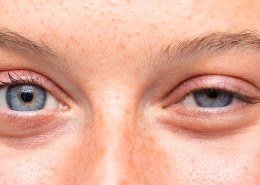36 year old male here, im thin with no known underlying medical conditions. 2 days ago, I felt pain in my right calf. It feels aching and heavy, and deeper inside than a usual muscle ache. Only ache and no swelling ...
Long-term use of birth control pills can come with both benefits and potential side effects, especially for managing conditions like endometriosis. Here are some things to consider: 1. Endometriosis and Birth Control: Management: Birth control pills are commonly prescribed for endometriosis becauseRead more
Long-term use of birth control pills can come with both benefits and potential side effects, especially for managing conditions like endometriosis. Here are some things to consider:
1. Endometriosis and Birth Control:
- Management: Birth control pills are commonly prescribed for endometriosis because they help manage symptoms by reducing or stopping menstruation, which can alleviate pain and prevent the condition from worsening.
- Period Stopping: It’s not uncommon for periods to stop on certain types of birth control, especially those designed to suppress menstruation (like continuous pill use). This is generally considered safe and a way to manage endometriosis symptoms.
2. Long-Term Use of Birth Control Pills:
- Bone Density: Some studies suggest long-term use of birth control can lead to a slight reduction in bone density, though this is more common with Depo-Provera injections than with pills. It’s worth discussing this with your doctor, especially if you’re at risk for osteoporosis.
- Cardiovascular Risks: Long-term use of birth control pills may increase the risk of blood clots, stroke, and heart disease, particularly if you smoke, have high blood pressure, or are over 35.
- Cancer Risk: Birth control pills have been shown to reduce the risk of ovarian and endometrial cancer but may slightly increase the risk of breast and cervical cancer. The overall risk varies depending on individual health factors.
3. Concerns About Periods Stopping:
- Hormonal Balance: If your periods have stopped entirely, it’s important to discuss this with your gynecologist. While stopping periods can be a goal of endometriosis treatment, sudden changes in your menstrual cycle could signal a need to adjust your medication.
- Long-Term Health: If you’re not sexually active and are concerned about the necessity of continuing birth control, your doctor might explore other treatment options for endometriosis. There are alternative therapies like progestin-only pills, hormone therapy, or even non-hormonal options depending on your symptoms and health goals.
4. Considerations Moving Forward:
- Health Monitoring: Regular check-ups and discussions with your healthcare provider are essential. If you have concerns about the long-term impact of birth control, they can guide you through the pros and cons of continuing or changing treatment.
- Alternative Treatments: If you feel that birth control may no longer be necessary for you, it might be worth discussing alternative options to manage your endometriosis that don’t involve continuous hormonal treatment.
Your health decisions should always align with your personal goals and comfort. If you’re feeling uncertain, it might be helpful to seek a second opinion from another gynecologist who can provide a fresh perspective on your treatment plan.
All responses provided by HELF are generated by its AI architecture. The information shared is intended for general informational purposes only and should not be relied upon for medical diagnosis or treatment. Please consult a healthcare provider for any medical concerns, diagnosis or treatment.
See less



Deep vein thrombosis (DVT) occurs when a blood clot forms in one of the deep veins of your body, such as those in your legs or arms. Left untreated, the clot could dislodge and travel to your lungs, causing a pulmonary embolism - a serious and potentially life-threatening condition. Some key warningRead more
Deep vein thrombosis (DVT) occurs when a blood clot forms in one of the deep veins of your body, such as those in your legs or arms. Left untreated, the clot could dislodge and travel to your lungs, causing a pulmonary embolism – a serious and potentially life-threatening condition.
Some key warning signs of DVT include aching pain, swelling, tenderness in tue calf. Pain with walking or movement of the affected area is also common. However, the absence of some characteristic symptoms does not rule out DVT, as some patients may only report mild ache or heaviness in the leg. At the same time, while most leg pains are not due to DVT, it is important to get any concerning symptoms properly evaluated expediently, especially if they persist for days and does not improve in severity. The easiest thing is to put it down to a muscle strain. Risk factors for developing a DVT in the leg include trauma, dehydration, immobility, recent air travel especially long haul and a family history of clotting problems.
I would not recommend taking aspirin on your own without seeing a vascular specialist first, as that could potentially worsen bleeding risks especially if you have pre-existing conditions such as a stomach ulcer. The best thing to do is schedule an appointment with a vascular surgeon to have your leg examined. We can perform a tailored physical exam and history taking to assess the likelihood of a DVT, and initiate further tests like a Duplex ultrasound scan and blood test marker to diagnose or rule out a DVT. Early detection and treatment are important for preventing longer term complications such as post thrombotic syndrome where the leg can feel particularly heavy when standing or walking for a long time and is associated with skin problems such as ulceration. The earlier you diagnose a DVT, the quicker you can be started on blood thinners and the more likely you can make a full recovery by dissolving all the clot. You can expect an ultrasound scan to be performed on the same day you are seen and and you will be informed whether you have a DVT or not.
Do make an appointment promptly for an evaluation. If your symptoms significantly worsen or you experience difficulty breathing, chest pain or palpitations, you should seek immediate medical attention. Let me know if you have any other questions.
Dr Tang Tjun Yip
Senior Vascular and General Surgeon
The Vascular & Endovascular Clinic
https://vascularclinic.sg/
https://www.facebook.com/theveclinic/
https://www.instagram.com/theveclinic/
The information provided on this forum is for educational purposes only and not intended as medical advice. Please consult a healthcare provider for any medical concerns, diagnosis or treatment.
See less